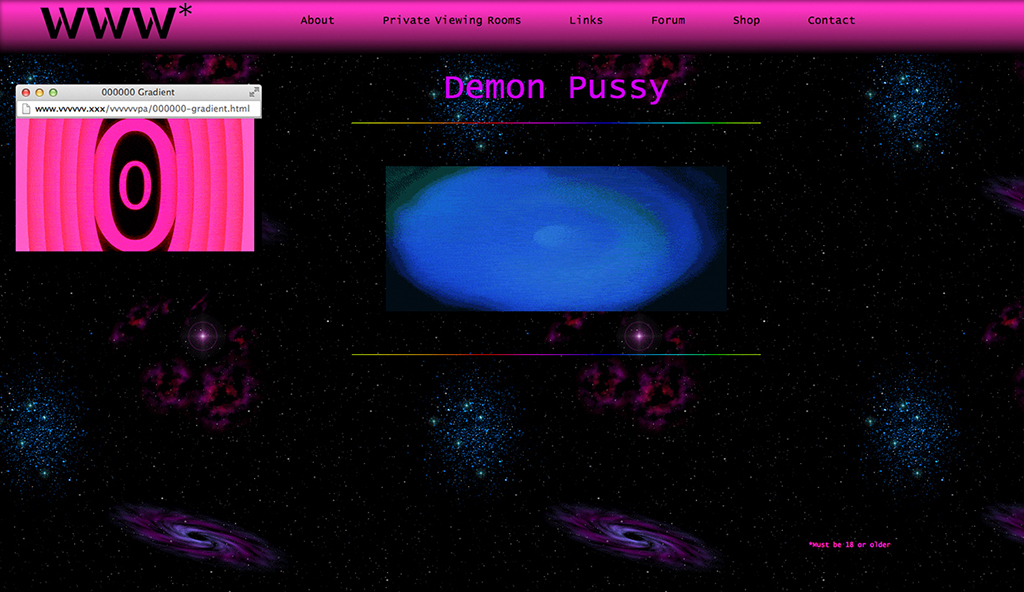Faith Holland | VVVVVV
For VVVVVV, I developed a fully-functional ‘pornographic’ website that depicts no nudity, only abstract images that address pornography’s use of women’s bodies throughout the history of the world wide web (WWW). The website uses appropriated footage that represents both the internet and the vagina. The project teases out an alternative history of the world wide web, pornography, and women’s bodies. The website critiques the dearth of representations of female anatomy, within and beyond pornography, and its relative cultural unimportance as compared to phallic imagery. By evoking a 1990s aesthetic—a time when mainstream consumers first got online—the website confronts the commercialization of the Internet that was accomplished using women’s bodies. The vagina is mapped onto how the popular visual imagination conceives the physical presence of the internet as an endless, tunneling space (as seen in The Matrix, Hackers, and Lawnmower Man), which, in the context of VVVVVV, becomes what I call a ‘cyberpussy.’ The site maps out new theoretical potentialities for gender, technology, and sex.
vvvvvv, faith holland, art, net art, the internet, world wide web, cyberpussy, pussy, vagina, feminism, feminist, gender, technology, sex, pornography, 1990s
21307
portfolio_page-template-default,single,single-portfolio_page,postid-21307,vcwb,vcwb-ver-2.12.1,ajax_fade,page_not_loaded,boxed,select-theme-ver-1.7,vertical_menu_enabled,,wpb-js-composer js-comp-ver-4.3.4,vc_responsive

VVVVVV
For VVVVVV, I developed a fully-functional ‘pornographic’ website that depicts no nudity, only abstract images that address pornography’s use of women’s bodies throughout the history of the world wide web (WWW). The website uses appropriated footage that represents both the internet and the vagina. The project teases out an alternative history of the world wide web, pornography, and women’s bodies. The website critiques the dearth of representations of female anatomy, within and beyond pornography, and its relative cultural unimportance as compared to phallic imagery. By evoking a 1990s aesthetic—a time when mainstream consumers first got online—the website confronts the commercialization of the Internet that was accomplished using women’s bodies. The vagina is mapped onto how the popular visual imagination conceives the physical presence of the internet as an endless, tunneling space (as seen in The Matrix, Hackers, and Lawnmower Man), which, in the context of VVVVVV, becomes what I call a ‘cyberpussy.’ The site maps out new theoretical potentialities for gender, technology, and sex. Launch the website here.

